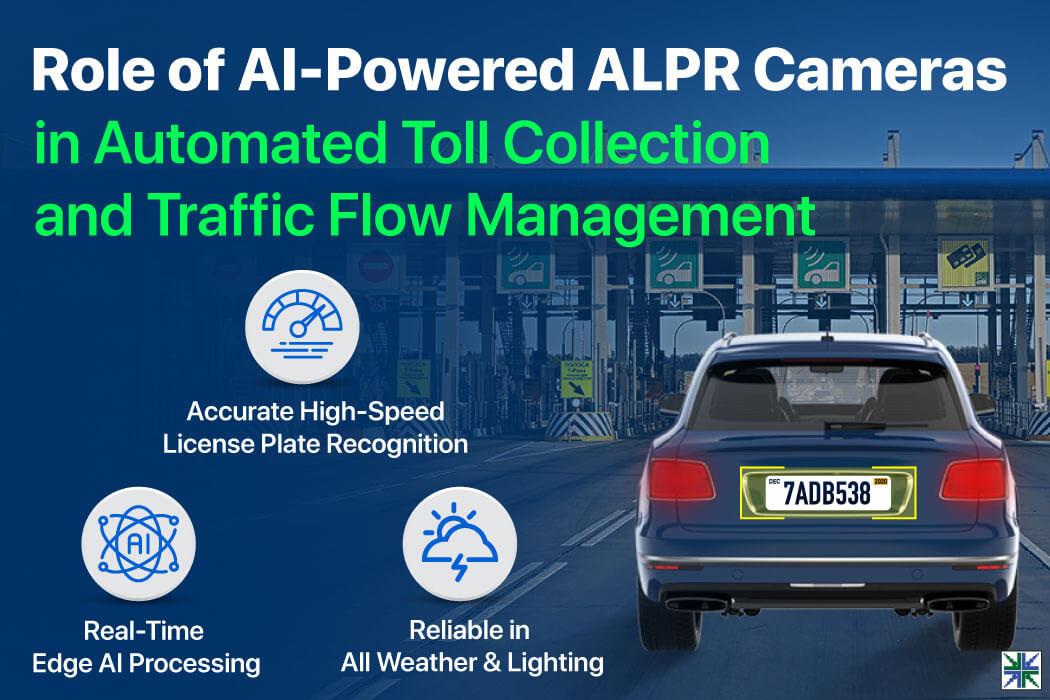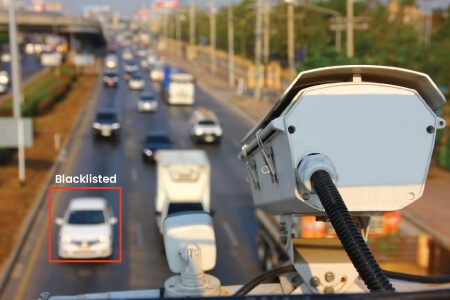What you will learn:
- How global shutter sensors and NIR tuning improve license plate recognition at high speeds
- Why real-time sync with vehicle triggers is critical for accurate toll enforcement
- The role of onboard processing and rugged enclosures in outdoor tolling reliability
Toll collection systems have evolved from manual booths to sensor-based automation due to rising traffic volumes. AI-powered ALPR systems ensure the smooth passage of vehicles without requiring physical stops or slowdowns. They carry out critical tasks like vehicle detection and number plate recognition.
These systems need industrial-grade cameras that can handle the visual demands of automated tolling. It includes high-speed vehicles, lighting extremes, and unpredictable field conditions.
In this blog, you’ll learn about the imaging challenges faced by automated toll collection systems and how the right camera features can help.
Camera Challenges Faced by Automated Tolling Systems
Toll lanes present a dynamic operating environment. Vehicles travel at varying speeds—some accelerating through free-flow lanes, others slowing down near gantries. Lighting conditions shift throughout the day, and weather events like rain, fog, or dust storms impact visibility.
Furthermore, license plate designs differ by region and state, often using non-standard fonts, layouts, or color schemes. Hence, traditional camera systems face limitations such as:
- Motion blur at high speeds reduces recognition accuracy
- Inconsistent illumination from natural and artificial sources
- Oblique angles from wide gantry setups distort character recognition
- Data loss due to glare from headlights or reflective plates causes misreads or missed detections
- Plate occlusion or dirt masks critical alphanumeric details
Such challenges directly affect tolling reliability. False positives or unreadable plates lead to lost revenue, delays, and poor traffic experiences.
Curious about what makes a camera truly ANPR-ready? Check out our blog: How to Choose the Right Camera for ANPR to dive deeper into sensor selection, optics, and tuning strategies.
What Are the Right Camera Features for Automated Toll Collection?
Global shutter sensor
Traditional rolling shutter sensors distort fast-moving vehicles, especially when license plates pass across the field of view at sharp angles. Embedded vision cameras equipped with global shutter sensors freeze the scene without motion artifacts. It makes them ideal for free-flow toll lanes where vehicles often travel above 100 km/h.
Global shutter imaging also removes the need for frame correction algorithms, reducing computational overhead.
Optimized exposure for day/night recognition
Outdoor imaging requires sensors capable of handling high dynamic range scenes like backlit vehicles during sunrise or under dim LED lighting at night. Cameras with auto-exposure tuning and near-infrared support deliver consistent plate detection under mixed lighting.
The ability to integrate external IR LEDs synchronized with camera exposure cycles further improves reliability during complete darkness or adverse weather.
Lens alignment and narrow FOV
Automated toll collection often occurs at fixed angles. Cameras mounted on overhead gantries or side poles need narrow field-of-view lenses aligned to center the license plate at a readable distance.
High-resolution sensors combined with narrow FOV lenses increase pixel density per character, improving OCR performance. Motorized lenses or multi-lens arrays also support zoom and framing adjustment based on traffic lane geometry.
High-performance onboard processing
ALPR systems demand fast response. Cameras integrated with onboard processors or FPGA modules can run embedded inference models directly at the edge. This setup reduces data transfer volume by performing initial object detection, frame selection, and license plate cropping within the device.
In environments where network congestion or delay is a concern, edge-based inference provides faster throughput and supports offline operation.
Ruggedized enclosure for outdoor deployment
Dust, humidity, and temperature variations can impact camera longevity and image consistency. Industrial-grade ALPR cameras are enclosed in weather-sealed casings with thermal control to maintain optimal operating conditions. It ensures durability under 24/7 operation across toll roads and highways.
Real-time synchronization with external triggers
Accurate image capture in tolling applications relies heavily on real-time synchronization with external sensors, such as inductive loops, laser triggers, or radar. Cameras equipped with external trigger input ports can capture frames at the precise moment a vehicle crosses a predefined detection zone. This ensures that the license plate is fully visible and in focus, avoiding unnecessary frames and reducing storage and processing load.
This trigger-based capture approach eliminates the guesswork involved in continuous or periodic frame capture, which can result in missed or blurred plates, especially at high vehicle speeds or in low-light conditions.
By using a hardware-centric approach to ALPR, including high-quality optics, global shutter or low-noise sensors, onboard processing, and support for external triggering, tolling systems can ensure high recognition accuracy. Moreover, there’s minimal need for post-capture correction or backend filtering. This improves toll enforcement reliability and reduces infrastructure cost and data processing overhead.
Powering Next-Generation Multi-Lane Free-Flow (MLFF) Tolling with End-to-End Vision Solutions
Impact of High-Performance Cameras on Traffic Flow Management
Barrier-free tolling
With accurate recognition at high speeds, vehicles no longer need to stop or slow down for manual payments or RFID validation. It results in reduced bottlenecks and improved average throughput.
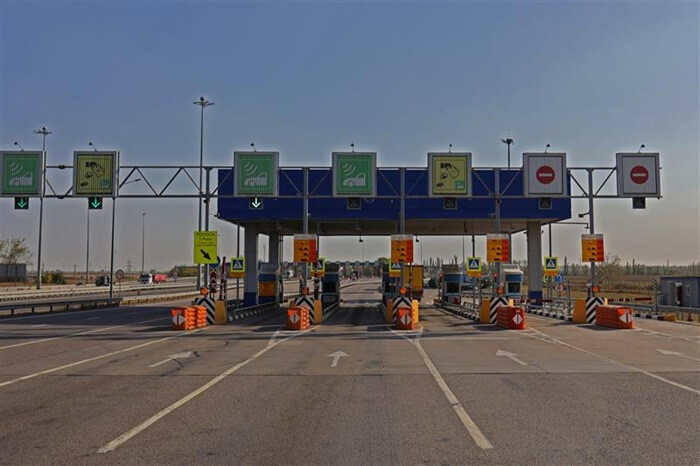
Vehicle categorization
ALPR systems combined with vehicle classification algorithms, based on axle count, size, or type, enable dynamic and usage-based toll pricing. When paired with Make, Model, and Color (MMC) recognition, these systems can further enhance enforcement accuracy by verifying vehicle identity and detecting mismatches or fraud, offering toll authorities an additional layer of validation and security.
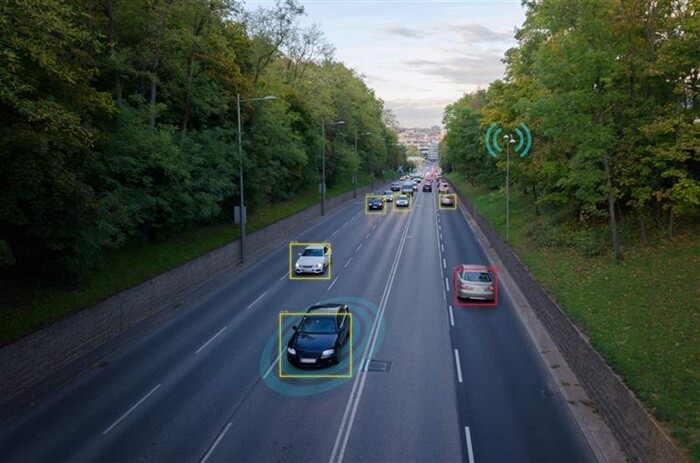
Incident detection and violation alerts
AI-enabled ALPR systems can detect anomalies such as reverse driving, lane hopping, red-light violations, and even identify stolen license plates. These systems can also help detect accidents or unusual stoppages. The collected data is transmitted to the control units for enabling real-time alerts, law enforcement action, or even post-event investigation.
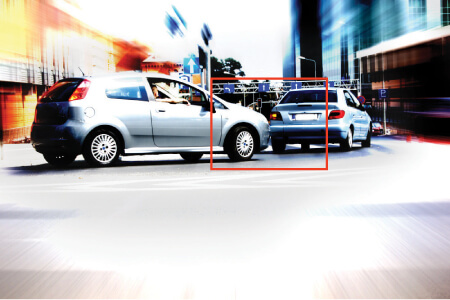
Data-driven traffic modeling
Every plate read is time-stamped and geo-tagged. The data enables pattern analysis for peak usage hours, lane-wise load, and commuter behavior. Urban planners and toll authorities can use this information to redesign entry and exit ramps or modify toll pricing.
Regulatory compliance
Some jurisdictions offer toll waivers for electric vehicles or zero-emission transport fleets. ALPR systems with backend integration can verify eligibility in real time without requiring physical tags or manual intervention.
e-con Systems Offers High-Quality Cameras for Automated Toll Collection
Since 2003, e-con Systems has been designing, developing, and manufacturing OEM cameras. We offer custom and off-the-shelf cameras that specifically meet the demands of smart traffic management, powering applications like automated toll collection systems.
Go to our Camera Selector Page to check out our end-to-end portfolio.
Know more about e-con Systems’ traffic management expertise.
Need help selecting the perfect camera module for your smart traffic system? Please write to camerasolutions@e-consystems.com.

Dilip Kumar is a computer vision solutions architect having more than 8 years of experience in camera solutions development & edge computing. He has spearheaded research & development of computer vision & AI products for the currently nascent edge AI industry. He has been at the forefront of building multiple vision based products using embedded SoCs for industrial use cases such as Autonomous Mobile Robots, AI based video analytics systems, Drone based inspection & surveillance systems.




